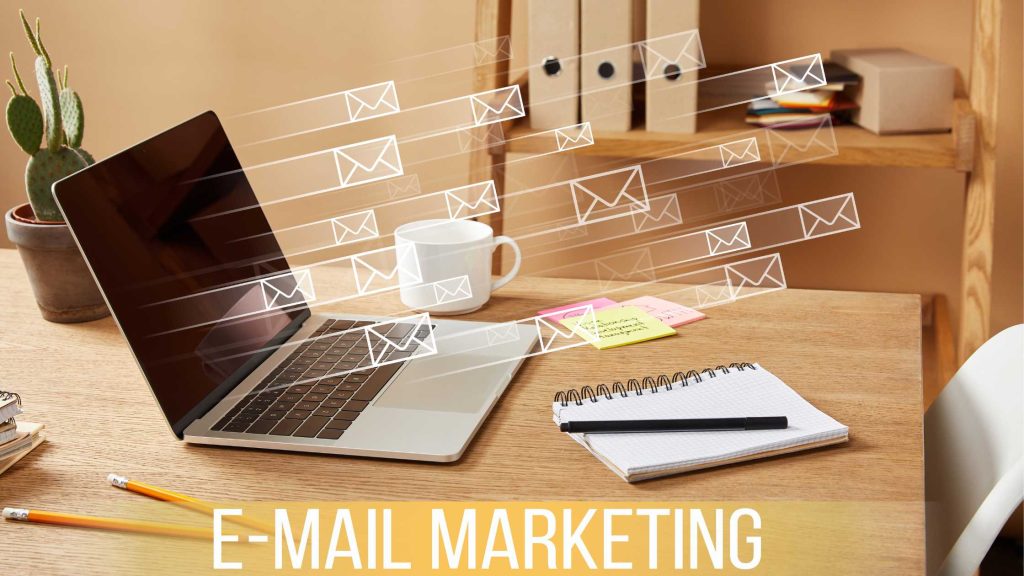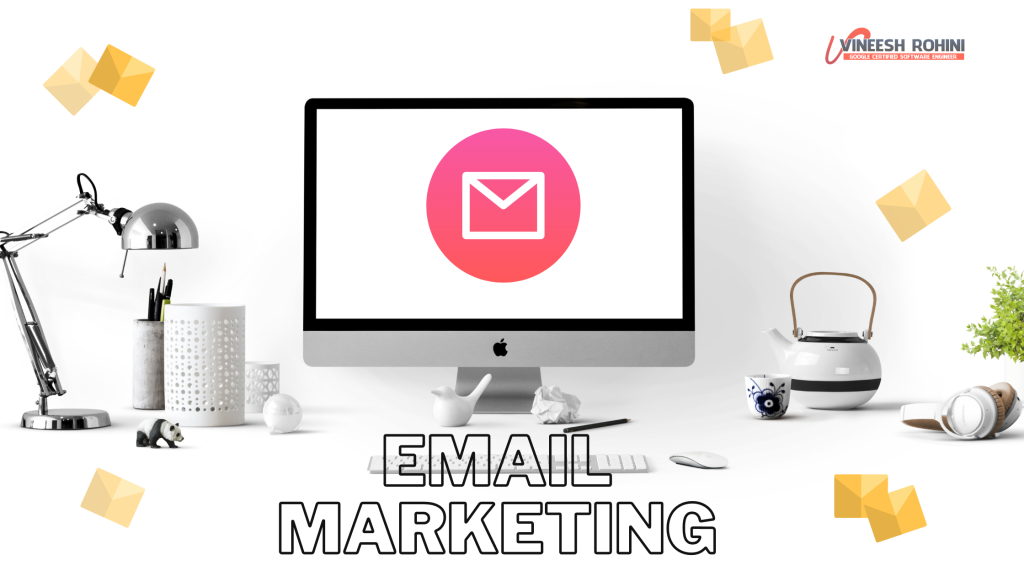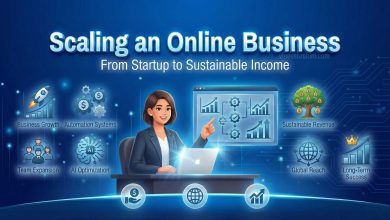Email Marketing Automation for Ecommerce Stores – Comprehensive Guide 2025
Email Marketing Automation : In 2025, the ecommerce landscape has become more competitive and customer-centric than ever before. Brands no longer rely solely on paid advertisements or social media to drive sales. Instead, they are investing in email marketing automation — a proven and cost-effective channel to drive engagement, boost conversions, and retain loyal customers. This detailed essay-style guide on email marketing automation for ecommerce stores in 2025 explores what email automation is, how it benefits online businesses, and which strategies and tools are crucial to success.
Table of Contents
Whether you’re a startup store or a growing D2C brand, this comprehensive guide will provide actionable insights to help you implement a powerful automated email marketing strategy.
What is Email Marketing Automation?

Email marketing automation refers to the use of software to send targeted, timely, and personalized emails to subscribers or customers based on specific triggers or behaviors. Unlike manual email campaigns, automation allows you to create predefined workflows—called email sequences—that run automatically based on user actions such as browsing a product, adding items to a cart, completing a purchase, or abandoning the checkout page. With automation, ecommerce brands can deliver the right message to the right person at the right time—on autopilot.
Why Email Marketing Automation Matters for Ecommerce in 2025
With increasing advertising costs, changing algorithms on social platforms, and tighter privacy laws, email marketing has emerged as the most reliable channel for nurturing leads and retaining customers. Here’s why automation is vital for ecommerce:
- Personalization at Scale: Automated emails can be tailored using dynamic content based on user behavior, purchase history, and preferences.
- Improved ROI: Email marketing delivers an average ROI of $42 for every $1 spent—higher with automation.
- Customer Retention: Automated emails keep your brand top-of-mind through re-engagement and win-back campaigns.
- Reduced Manual Effort: Once set up, workflows save time and operate 24/7 without manual intervention.
- Data-Driven Decisions: Automation platforms offer analytics and segmentation tools to refine campaigns over time.
Also Read : What is Email Marketing ?
Key Benefits of Email Marketing Automation for Ecommerce Stores
- Abandoned Cart Recovery
One of the biggest pain points in ecommerce is cart abandonment. In 2025, automation tools enable you to send a sequence of emails reminding users of what they left behind, offering discounts or showcasing related products to encourage purchase completion.
- Welcome Email Series
When a user subscribes to your newsletter or creates an account, an automated welcome email series can introduce them to your brand, highlight best-selling products, and encourage their first purchase.
- Post-Purchase Nurturing
Post-purchase emails are crucial to building brand loyalty. Automation lets you send thank-you emails, ask for product reviews, and recommend complementary products based on previous purchases.
- Win-Back Campaigns
Not all customers stay engaged forever. Win-back campaigns are automated series designed to re-engage inactive customers with special offers, reminders, or content.
- Product Recommendation Emails
Using AI and machine learning, platforms can analyze purchase and browsing data to send automated product recommendation emails that are personalized for each customer.
- Customer Feedback & Review Requests
Automation allows you to send follow-up emails asking for reviews, helping build social proof while improving products and service.
- Birthday and Anniversary Emails
Sending automated greetings with special discounts on birthdays or purchase anniversaries builds emotional connection and drives sales.
High-Converting Email Marketing Automation Workflows for 2025
- Welcome Series Automation
A well-crafted welcome series can achieve 3x the engagement rates of standard campaigns. It typically includes:
- Email 1: Welcome message + brand intro
- Email 2: Product education or testimonials
- Email 3: First-time discount offer
- Browse Abandonment Workflow
When users browse products without adding them to the cart:
- Email 1: Product reminder
- Email 2: Related product recommendations
- Email 3: Time-sensitive discount
- Abandoned Cart Workflow
Triggered when items are added to the cart but not purchased:
- Email 1: Cart reminder within 1 hour
- Email 2: Scarcity or urgency message after 24 hours
- Email 3: Discount or free shipping incentive after 48 hours
- Post-Purchase Upsell and Cross-Sell Workflow
Once a user purchases a product:
- Email 1: Thank you + order summary
- Email 2: How-to guide or unboxing video
- Email 3: Cross-sell related items
- Re-Engagement Workflow
When a customer hasn’t engaged in 60–90 days:
- Email 1: We miss you + update on new arrivals
- Email 2: Incentive-based offer
- Email 3: Final call before removing from the list
- Loyalty Program Email Sequence
For returning customers or loyalty members:
- Email 1: Points update + perks summary
- Email 2: Exclusive offer
- Email 3: Invite to refer a friend
Essential Features to Look for in Email Automation Tools

To build a successful ecommerce email automation strategy in 2025, you need the right tool. Key features to look for:
- Pre-Built Templates and Workflows
- Segmentation and Personalization
- AI-Powered Product Recommendations
- A/B Testing Capabilities
- Drag-and-Drop Email Builder
- SMS and Email Integration
- Behavioral Triggers (clicks, visits, purchases)
- Dynamic Content Blocks
- Detailed Analytics and Reporting
- Compliance with GDPR and other privacy laws
Top Email Marketing Automation Tools for Ecommerce in 2025
- Klaviyo
Best for D2C ecommerce brands. Deep Shopify and WooCommerce integration, advanced segmentation, and AI product suggestions.
- Omnisend
Ideal for small to mid-sized ecommerce stores. Offers email, SMS, and push automation from one dashboard.
- Mailchimp
Perfect for beginners. Offers basic automation workflows and an easy-to-use interface.
- ActiveCampaign
Robust automation workflows and strong CRM capabilities. Ideal for ecommerce stores with complex funnels.
- Drip
Tailored specifically for ecommerce with dynamic personalization, multi-channel campaigns, and behavior-based automation.
- ConvertKit
Popular among creators and solopreneurs selling digital products. Great for ecommerce with simple automations.
- MailerLite
Affordable and user-friendly. Good for smaller stores or dropshipping businesses.
Advanced Email Automation Strategies for 2025
- AI and Predictive Analytics
Use AI-powered tools to predict customer behaviors—like when a customer is likely to churn or purchase again—and automate emails accordingly.
- Hyper-Personalization
Move beyond first-name personalization. Use location, past purchases, and even user device types to deliver hyper-relevant messages.
- Behavioral Triggers
Send automated emails based on behaviors like scrolling a product page for more than 30 seconds, watching a product video, or using filters while browsing.
- Multi-Channel Automation
Combine email with SMS, WhatsApp, and push notifications for an omnichannel customer experience.
- Dynamic Content Blocks
Show different content within the same email based on who’s opening it (e.g., new vs. returning customers).
- Real-Time Inventory Integration
Showcase products in emails that are currently in stock or trending, updated in real-time via automation.
Best Practices for Ecommerce Email Automation in 2025
- Optimize for Mobile First: Over 70% of emails are opened on mobile devices. Ensure your templates are responsive.
- Test Subject Lines: A/B test subject lines to boost open rates. Use urgency and personalization.
- Avoid Spam Triggers: Steer clear of all-caps, excessive punctuation, or spammy phrases to land in inboxes.
- Use Clear CTAs: Guide readers toward a specific action—like “Shop Now,” “Claim Offer,” or “View Product.”
- Clean Your List Regularly: Remove unengaged users to improve deliverability and reduce costs.
- Stay Compliant: Include unsubscribe links and adhere to laws like GDPR and CAN-SPAM.
Future Trends in Ecommerce Email Automation
- Voice-Activated Emails: With the rise of voice assistants, emails may become more interactive and voice-readable.
- Interactive Email Elements: Expect embedded carousels, live countdowns, and quiz-style forms within emails.
- Blockchain for Email Verification: Improving deliverability and reducing fraud by verifying sender identities via blockchain.
- AI Copywriting: Automated generation of high-converting email copy based on customer sentiment and behavior.
- Augmented Reality Integration: Emails may include AR elements to let customers visualize products in their environment before purchase.
Common Mistakes to Avoid in Email Automation
- Over-Automating: Bombarding users with too many automated emails can lead to unsubscribes.
- Lack of Segmentation: Sending the same email to your entire list results in poor engagement.
- Ignoring Analytics: Not monitoring open rates, CTRs, and conversions leads to stagnant growth.
- Set-and-Forget Mentality: Automation requires constant optimization, testing, and tweaking.
Conclusion: Automation Is the Engine Behind Ecommerce Growth in 2025

Email marketing automation is no longer a luxury—it’s a necessity for ecommerce success in 2025. With customers expecting personalized, timely, and valuable communication, automated email workflows help bridge the gap between browsing and buying. Platforms like Klaviyo, Omnisend, and ActiveCampaign offer powerful tools to create, optimize, and scale your marketing funnels. Whether it’s recovering lost sales through abandoned cart reminders, building loyalty with post-purchase sequences, or winning back inactive users, email automation delivers measurable results with minimal manual effort.
Buy Now : Email Marketing Mastery Course
As technology evolves, staying ahead with AI, hyper-personalization, and omnichannel automation will separate thriving ecommerce brands from the rest. Start investing in the right tools, refine your email strategy, and turn your ecommerce store into a sales-generating machine—24/7, 365 days a year.
Disclaimer: Features, statistics, and platform details mentioned are accurate as of 2025. Please consult each email marketing platform’s official site for the latest information and pricing.



